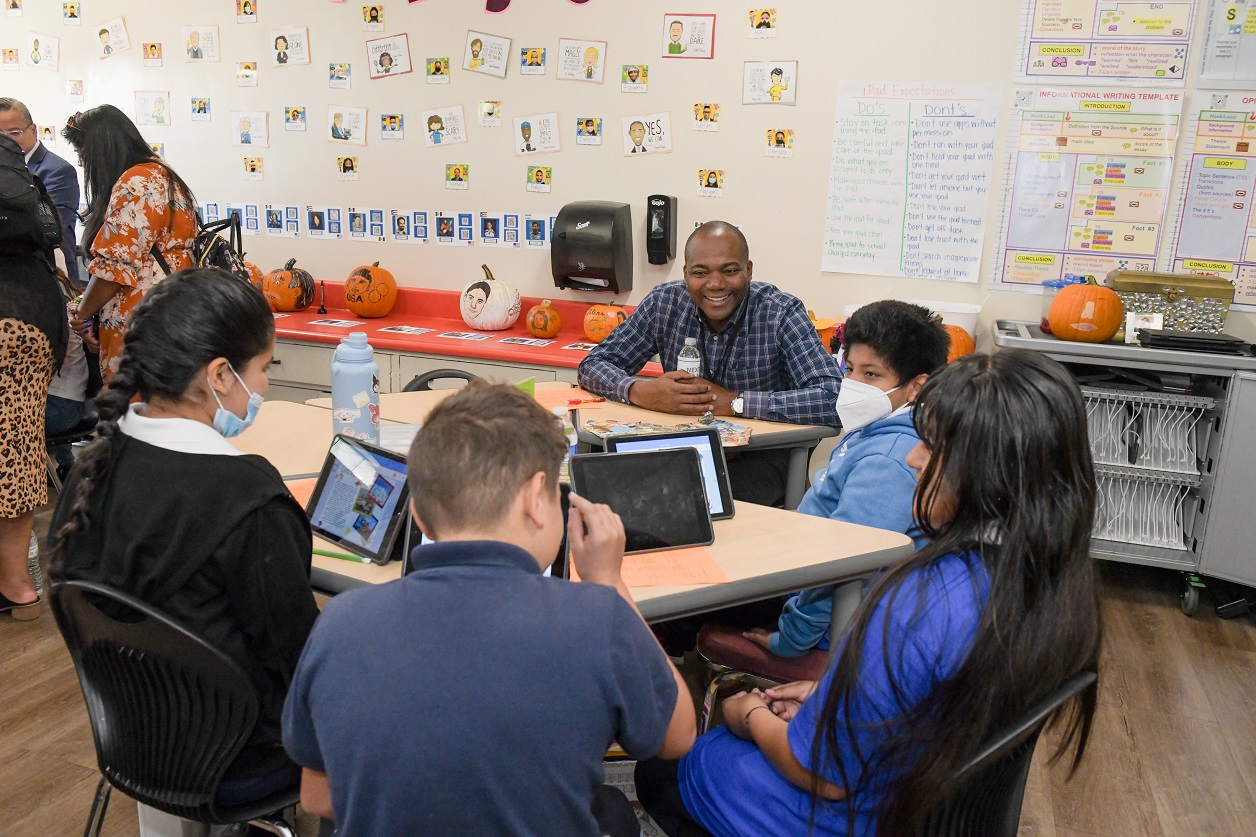5 Tips for Teaching With AI & Digital Technology, From The CEO of Digital Promise
Schools can do more to embrace AI and other digital technologies, said Jean-Claude Brizard, President and CEO of Digital Promise, during a recent keynote address.

It’s no secret that digital technologies have transformed society, upending the way we shop for groceries, use car services, and even date and fall in love, said Jean-Claude Brizard. But when it comes to education, the digital transformation has all too often been late to class.
“There's a lot of edtech in schools, but often it’s not embraced in a coherent fashion,” said Brizard, President and CEO of Digital Promise. Brizard made these remarks as part of his keynote address during the virtual #NYCSchoolsTech Leadership Summit 2023, which can be watched on demand here.
During his keynote, Brizard shared strategies Digital Promise has developed to make digital transformation more consistent and effective in schools, as well as ways in which AI can be used to empower students and teachers.
Of course, the first step to a successful technological transformation incorporating AI is providing digital access to all students, and Digital Promise focuses much of its work in that area. Once all students have access, there are specific ways in which AI and other digital technologies can be better utilized in the classroom. Here are some tips along those lines from Brizard.
1. Focus Technology Integration on Personalized Learning

As educators know, one of the best ways to help a student grow is to provide personalized education. But to overworked teachers that advice can sometimes feel the same as saying the best way to make more money is to earn more money. Brizard understands this.
“When we talk about the ideas of learner-centered teaching or learning, for example, often we have teachers with 34 kids in the classroom, we give them a blackboard with chalk and say, ‘Go ahead and get personal,’” he said. “We all know that’s not possible [when you’re teaching] five classes a day, and 150 kids.”
By focusing technology integration in schools around supporting teachers in providing personalized learning, technology can help overcome long-standing digital inequities, Brizard said. AI, in particular, has a great deal of potential in this regard.
Tools and ideas to transform education. Sign up below.
2. AI-Enabled Strength-Based IEPs
One of many ways in which Digital Promise is working to use technology to better help students is by flipping the Individualized Education Plan (IEP) model around with the help of AI.
“We are in the process of developing the idea of a strength-based IEP that leans on artificial intelligence,” Brizard said. “That means moving the IEP from a deficit-based construct to one that focuses on learning science and is a strength-based document.”
AI has the potential to make this possible by better identifying the needs of all students and helping teachers provide individualized resources to meet those needs. “We know that technology can be an amazing enabler in doing that,” Brizard added.
3. Computational Thinking Across Curriculum
Another way in which schools can better utilize technology is to incorporate lessons in computational thinking throughout the curriculum. During his keynote, Brizard played a video from Talladega County Schools, a rural district in Alabama, where schools are already doing this.
“We saw vision around technology that was ubiquitous across the district,” Brizard said of a visit he took with other educators to the district. “I walked into a pre-kindergarten class and watched 4- and 5-year-olds building birdhouses and talking about computational thinking pathways or skills.”
Computational thinking discussions were also taking place as part of a conversation about Shakespeare in a 12th-grade honors English class Brizard visited. These conversations also occurred in the CTE classes in the district. “So it was everywhere, it was ubiquitous,” he said.
4. Teach, Don’t Ban, AI
Brizard advised educators to expand their thinking when it comes to AI. “AI is many things, it's not just ChatGPT. It’s not just large language models,” he said.
Addressing those who might be concerned about AI cheating, he shared how when he started out as a science teacher in New York City, graphing calculators were banned but eventually became a must-have item for all students.
“People began to see the calculator as a tool, as an enabler, versus a cheating tool,” he said. The same type of evolution needs to happen around AI in education. Instead of shunning AI, Brizard spoke about how educators can use AI to prepare students for the future.
5. Remember, AI is Evolving
Digital Promise representatives are working with the U.S. Department of Education to help develop and release guidance on how to approach AI, which continues to evolve rapidly.
Part of these efforts will include guidance on better ways to detect AI. “Folks ought to know when AI is showing up in their work, how it’s showing up, so the human remains in control,” Brizard said.
Brizard added that AI also has the potential to help ease teacher workloads so they can focus more on individualized feedback to students. “AI assistance for teachers [can] reduce their workload by 30 percent. Can you imagine what that could do for a classroom teacher?”
Erik Ofgang is a Tech & Learning contributor. A journalist, author and educator, his work has appeared in The New York Times, the Washington Post, the Smithsonian, The Atlantic, and Associated Press. He currently teaches at Western Connecticut State University’s MFA program. While a staff writer at Connecticut Magazine he won a Society of Professional Journalism Award for his education reporting. He is interested in how humans learn and how technology can make that more effective.

